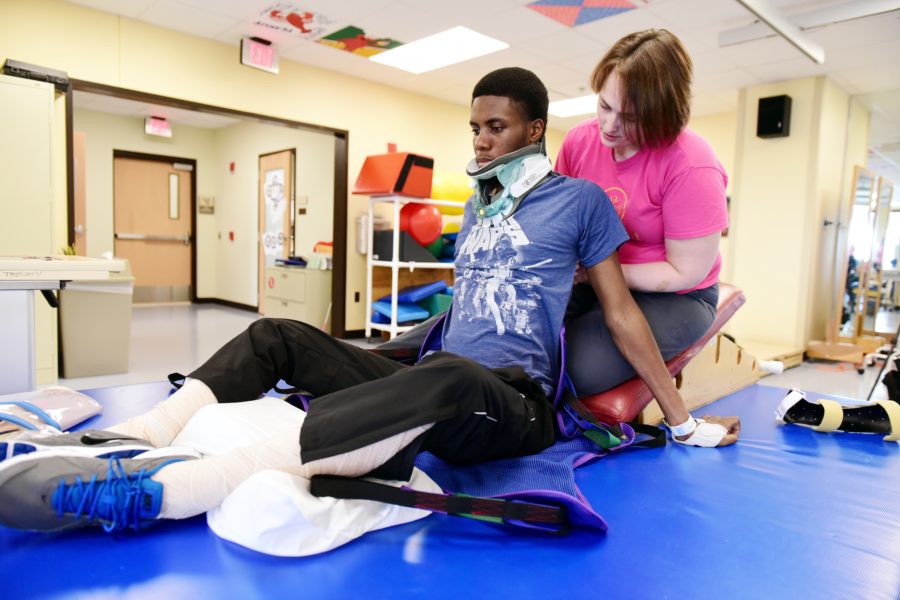Just a few seconds . . . That’s all it took for Nancy Edwards to go from working nurse to spinal cord injury patient.
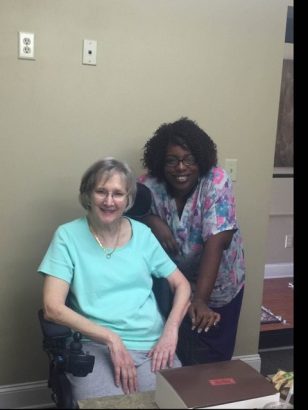
It happened on an otherwise routine day in 2002. Edwards was on her way to work at Emory University Hospital. She was riding in an elevator, and when the doors opened, she didn’t realize that the elevator had stopped just a bit shy of floor level. As she stepped out, she tripped over the uneven threshold and lost her balance.
With horrifying suddenness, Edwards’ stumble propelled her into a very hard fall. And even worse, her head and neck bore the brunt of the impact. She recalls only a few blurry details of that life-altering accident. When a passer-by found her, she was on the floor, bleeding and having difficulty breathing.
She remembers the paramedics who arrived to help her, and how even though she was clinging to consciousness, she was still thinking like a nurse. She noted how carefully they secured her head before transporting her to the emergency room. And she made a point of telling them that she had lost the feeling in her arms and legs — not a good sign, but important for medical professionals to know.
She had a C-4 injury. There was a fracture at the base of the neck, but the spinal cord was not completely severed. Still, though things could have been worse, the accident had robbed her of the mobility she was accustomed to.
Edwards had surgery the next day, followed by plenty of rehabilitation and continuing patient care at the Shepherd Center in Atlanta. And though she realized that things would never be the same again, she was determined that she would live as close to an ordinary life as possible.
Recent data suggest the annual incidence of spinal cord injuries (excluding those injured people who die before they can be transported) is about 54 cases per 1 million population in the United States, or approximately 17,000 new cord cases each year, according to the National Spinal Cord Injury Statistical Center.
Georgia, with a population of slightly more than 10 million, would see around 450 to 550 cases annually from such accidents.
Spinal cord injuries can occur in many ways. A few of the more common causes include falls, diving accidents, vehicle crashes and physical assaults, according to the CDC. Some cases, such as what happened to Edwards, occur under circumstances in which the person did not even perceive any danger. The fact is, a spinal cord injury can happen to anyone.
Broadly speaking, the CDC says damage to the spinal cord “can affect a person’s quality of life in many ways, including cognitive, behavioral and emotional moods, and physical [as well as financial] effects.” But these injuries vary in their severity and long-term effects.

The outcome of any spinal injury depends largely on the level of the spine where the injury occurs. The higher the injury, the worse the effects.
For the first year after injury, “high cord” patients (as in categories C-3 and C-4) can expect to pay more than $1 million for care, according to spinalcord.com. “Lower cord” injuries can produce about $800,000 in medical expenses the first year. Costs tend to go down — though not by much — following that first year.
Edwards had a serious concussion along with the spinal cord injury. But fortunately in her case, the cervical fracture was incomplete, allowing her to retain some movement in her arms and lower extremities. Nevertheless, she still requires full-time caregivers.
One procedure that helped Edwards was the relatively swift surgery, known as a laminotomy, that she received at Emory.
The operation, which took place before she transitioned to Shepherd, consisted of removing part of the vertebral arch to provide extra space. The surgery also helped to relieve pressure after the trauma had led to serious swelling.
The transition to home
Edwards eventually transitioned from living in a care facility to a place where she calls home. She is able to visit her “real” home on occasion. Finding help when making the transition out of a rehab hospital is no easy task, she says.
“The connection [to the person’s old life] is often missing,” says registered nurse Kathy Adams, owner of Accord Services. “That’s because everyone who goes through a catastrophic injury has to start life over.”
Adams is familiar with the problems that Shepherd patients sometimes face once they leave the facility. She worked as a nurse there. “Just seeing that need in a client, and being able to help them through that, is what makes me get up every day,” she says.
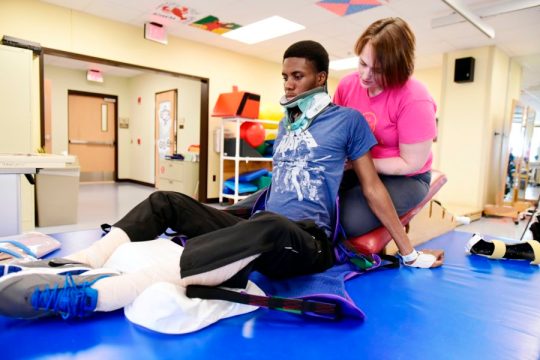
She wanted to be a nurse from the time she was 10, encouraged partly by her own life experience. “I was hospitalized as a young patient for 6 months with a ruptured appendix, which included a serious blood infection,” she says. Under those circumstances, she got to know a nurse’s job pretty well.

Her work at the Shepherd Center helped her realize the importance of home care. Even people treated at the best facilities sometimes don’t leave with enough preparation to live at home, she says.
Over the years, she would see “patients going backwards instead of forwards” after the transition, and she was determined to make things better.
She and her husband founded Accord Services in 2001 to fill a need for a higher standard of care for patients with catastrophic injuries who were transitioning from hospitals to home care.
Today, her company serves patients in Georgia, Alabama and New York state, and she remains dedicated to helping homebound survivors of catastrophic injuries.
“The more complex the injuries, the more modifications are needed, and the process can take its toll on the injured and their families,” says Adams.
The right equipment
Not everyone with a spinal cord injury will require a wheelchair, according to the Shepherd Center. Some people are able to use braces and crutches. But wheelchairs are a great tool for mobility.
Dr. Donald Peck Leslie, medical director at Shepherd, notes that durability of medical equipment is a big issue for patients. The longer a piece of equipment lasts and keeps working, the less inconvenience for the user.
The best of the motorized wheelchairs are like automobiles, Leslie says. “They last about 5 to 7 years and then they have to be replaced.”

Comfort can be as essential as utility. Leslie mentions the importance of wheelchair cushions. “Our patients are instructed to do weight shifts at least once an hour, and more often if they have a skin problem,” he says. Pressure sores are a serious health issue, and protecting the areas of the body most vulnerable to them is critical.
New technology to help people with disabilities is coming out on a yearly basis, Leslie says.
“Today, we have better anti-spasmodics, too,” he adds. These are implantable devices that “allow us to give the medication directly into the patient’s spinal fluid via a pump catheter, so it does not sedate the patient,” (The medication does not pass through the blood-brain barrier.)
With these devices, “we can eradicate painful spasms — it is very, very effective,” he says.
All in all, “getting the proper wheelchair, getting the proper lifts, and getting the proper accommodations made at home are so important,” Leslie says.
Helping a patient fit back in
Rick Thaxton of HomeFree Home Modification is involved with making people’s residences more livable after their injuries. He says that once he and his colleagues are at the person’s home, “[we] determine what’s going to be required in the way of home modification that can best serve a particular client’s needs.”
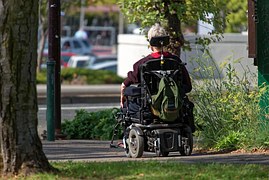
He recommends special help for those families handling a loved one who has had a catastrophic injury.
The amount of change needed depends on the extent of the individual’s disability and the conditions already existing in the home.
Many modifications employ “Universal Design,” which allows the disabled and the able-bodied to enjoy a space that is functional and comfortable to both, according to brainandspinalcord.org.
“Widening doors or even the entire hallway can help prevent knuckle-scraping when clients are maneuvering through narrow areas,” Thaxton says. A barrier-free shower (especially for people who use wheelchairs) is often a high priority.
There are also ceiling-mounted lifts, says Thaxton, to help people who have experienced catastrophic injuries and have essentially no mobility. Lifts enable caregivers to maneuver a patient through the home, or simply from one room to another.
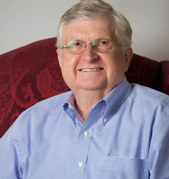
And chair lifts or home elevators can allow enjoyment of more than just the first floor, says Thaxton.
“I try to think of the caregivers and as well as the patient” when making modifications, he says. The caregivers’ work is hard, and they need conditions that don’t make it any harder.
Dedicated professionals, from researchers to doctors to equipment manufacturers, are working to improve the lot of people with major injuries. But Nancy Edwards, the nurse whose life was turned upside down when she stepped out of an elevator 14 years ago, can attest to the fact that living with a disability is a challenge.
Like many nurses, she knew the vulnerabilities of the human body but never anticipated being a statistic or a patient herself.
Still, she handles her situation with grace and and a keen sense of perspective. As she tells GHN, “I suppose none of us really know what’s going to happen next.”
Judi Kanne, a registered nurse and freelance writer, combines her nursing and journalism backgrounds to write about public health. She lives in Atlanta.

